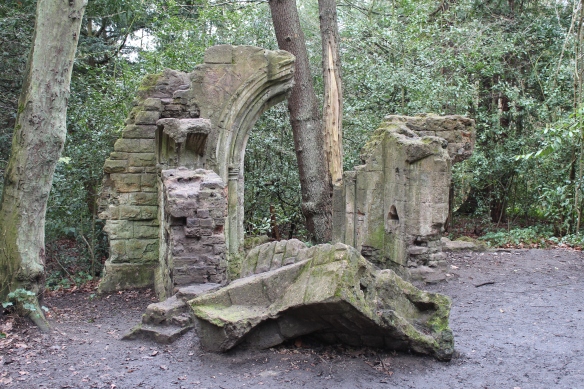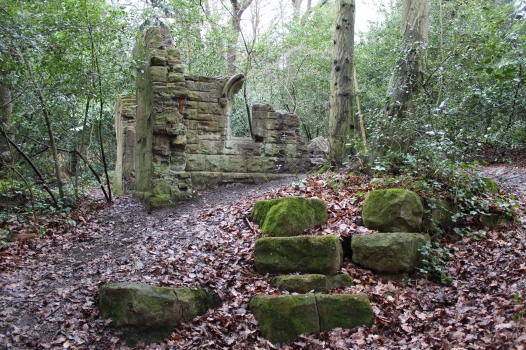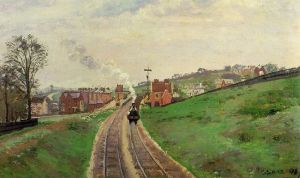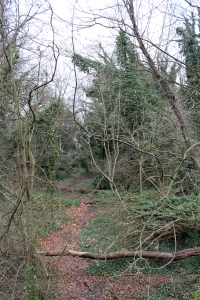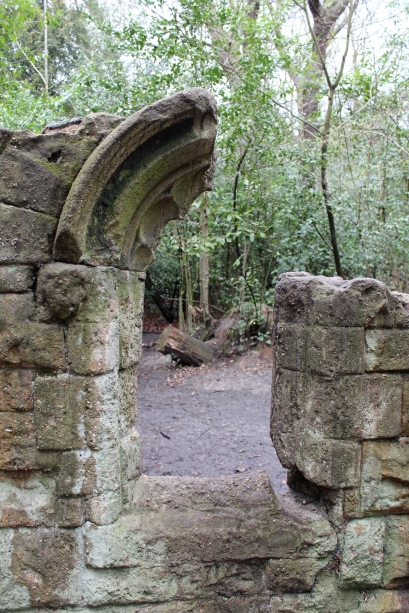Wanderers new to Shooters Hill Woodlands may be surprised to find signs pointing them ‘to the castle’. But Severndroog Castle is in fact not a castle at all but a folly. Nor is it a sham castle but rather another popular form of folly – a triangular tower, a fashionable style for ambitious follies of its day. The 60-foot gothic brick tower designed by Richard Jupp – featuring a hexagonal turret at each corner – is found in Castle Wood, atop South London’s highest point. Built in 1784 by his widow to commemorate Commodore Sir William James and his capture in 1755 of the Indian island fortress of Suvarnadurg (rendered in English as Severndroog) – a castle seems a most appropriate form for his memorial to take.
Although classified as a folly – which is generally held to be a structure without a purpose – Severndroog Castle has actually given itself over to a number of uses throughout the years. This is mainly owing to its great height – the roof of its tower is 50-feet higher than St Paul’s Cathedral cross. Its vantage point across seven counties has been put to good use in linking up England and France trigonometrically (in 1797), in the surveying of London by the Royal Engineers (1848) and during World War Two as an observation post. Some of this view has now been lost as the trees have grown up around the castle.
Now sadly boarded up, the castle once boasted a cafe on the ground floor and, according to Hilary Peters from the Folly Fellowship who visited the site in the 1970s, ‘a perfect eighteenth-century interior: original flower paintings on the original green walls, original plasterwork, original shutters’. She also reveals that one of the towers encloses a staircase, while the others are cabinets off the main room; the first and second floor rooms were kept locked – though Barbara Jones described ‘a hexagonal room with a fine plaster ceiling’ on the first – but visitors could ascend the stairs to the platform on the roof and take in the views.
Unfortunately the interior has been seriously vandalised, while Peters believes that the Georgian flowers were painted over by ‘official vandals’ some time ago. This Grade II* listed structure currently finds itself on English Heritage’s Buildings At Risk register. The Severndroog Castle Building Preservation Trust is now working to restore and re-open the castle, having almost secured an agreement to lease it from Greenwich Council. They have secured Heritage Lottery Funding of £595,000 but this covers only 70% of the full cost – more funds are needed for the Trust to meet its full target of £840,000. You can donate or ‘buy a brick’ for just £5 through Just Giving. Hopefully Severndroog Castle can lose its ‘at risk’ status – a sad fate for a building that folly hunter Gwyn Headley once described as the earliest and best folly tower in London.
What you can do: you can donate/buy a brick to support the castle here
For further information & advice on how to get to the site (the postcode is SE18 3RT): Severndroog Castle Building Preservation Trust





